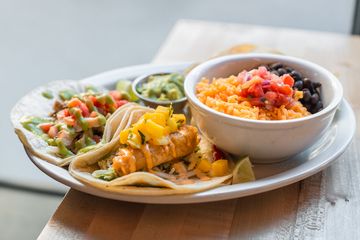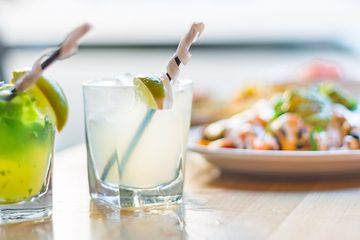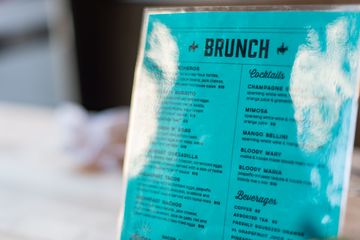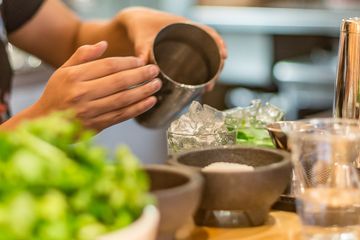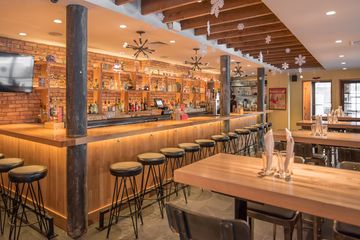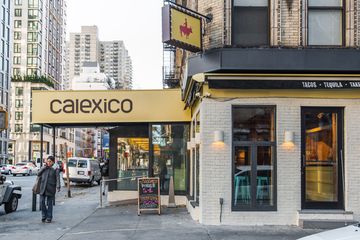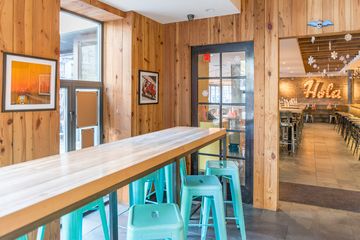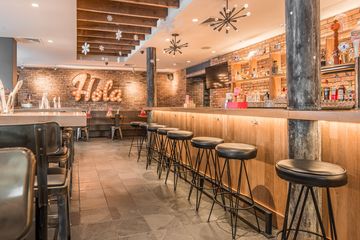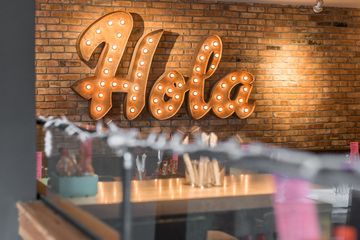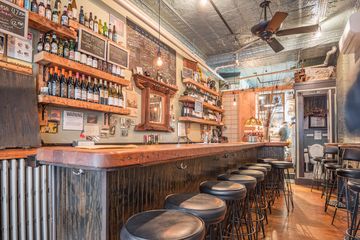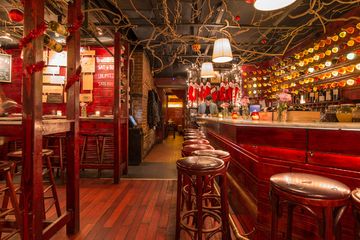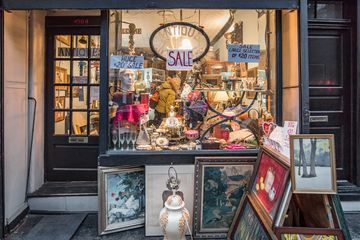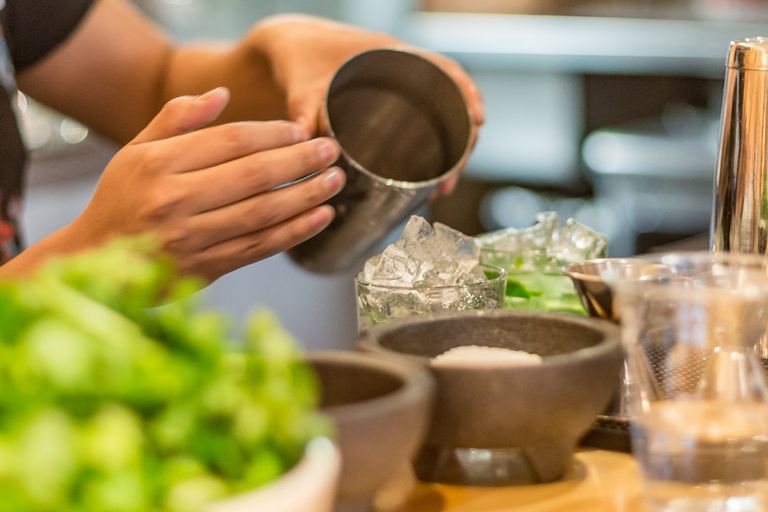
Calexico began as - and still is - a food truck run by three brothers. Jesse, Brian, and David Vendley grew up near Calexico, a real place located on the border between Mexico and California. Missing the food from their hometown, the three began cooking and serving their grandmother’s recipes out of a truck on the streets of New York. They earned their first Vendy award in 2006. That award was followed by many more, and they eventually opened their first brick and mortar location, collaborating with Chef Pete Oleyer, in 2009 in Brooklyn. I have dined on their food over the years and was thrilled to discover their newest location on East 78th Street just a few weeks after it opened in 2015. The restaurant, as advertised, is a delightful mixture of Mexican and American culture. Parts of the menu are in “Spanglish,” such as the “Happy Hora,” which is every weekday from 5pm to 7pm. We were met by the bright light-up “Hola” sign, a staple in all Calexico restaurants, and Michael, the general manager.
Michael brought Manhattan Sideways team members Olivia and Tom some food to sample, starting with carne fries. “Everyone serves nachos, as do we, but these are a new twist on a Mexican classic,” he said while Olivia and Tom tucked into the plate of cilantro fries generously covered in carne asada, beans, guacamole, and cheese. Michael also brought out a “lunchbox,” a reasonably-priced, personal-sized combo platter containing two tacos of the customer’s choice, rice and beans or salad, and chips and guacamole. Needless to say, our team was happy. After tasting the food, they understood when Michael noted that the Upper East Side was really embracing the new restaurant.
In addition to the main restaurant, Calexico sports a taqueria where customers can grab food to go or sit in their mini seating area. The whole restaurant caters to a diverse customer base, from young professionals to senior residents, to young families who come in for an early dinner. Michael humorously described how families come to dine in the restaurant at 5pm and turn the taqueria into a “stroller parking garage." The main dinner crowd starts around 7:30pm and by later on at night, Calexico fosters a party atmosphere with a great bar crowd and pumping music. “It’s a cool, fun oasis,” Michael happily stated. “It’s so relaxed…people come for food, friends, and fun.” Michael had us try two of the more popular drinks from the bar, the signature house margarita and a jalapeno mint margarita. Olivia and Tom could not figure out which one they liked better!
Whether its drinks at the bar, tacos at the taqueria, or a full meal, everything at Calexico is homemade. Even the little details, like the lime juice and simple syrup in the margaritas, are done by hand. As for the future, Michael is excited to continue growing. Fajitas are in the cards, and catering and delivery service started in 2016, shortly after we visited. In addition to being enthusiastic about the menu, Michael could not help but gush over how pleased he is with the Vendley brothers. “They’re the nicest people I’ve met in my entire life. It keeps you motivated.” Overall, Michael is happy to have found Calexico after working for many years in the corporate restaurant world. “I had faith in goodness, and I found it,” he told me. “Everything is authentic here, the food and the people.”

